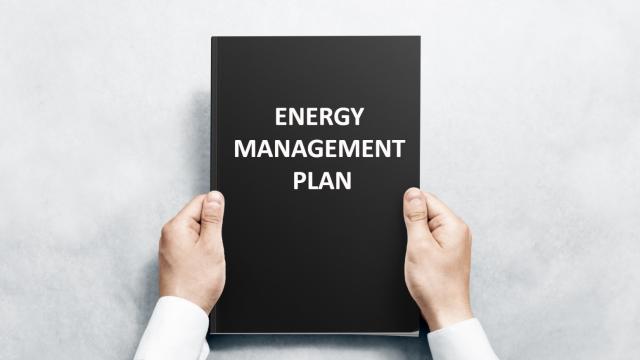Are you looking to improve the energy performance of your building to reduce costs and meet sustainability goals? An energy management plan can help you establish energy-saving objectives, implement performance improvements and track progress. Here are the key steps to developing and implementing a successful plan.
Start simple
- Although your long-term plans may call for system or component upgrades, there are plenty of simple, low-cost steps you can take to reduce your energy use. Although every facility is different, here are some commonly used energy efficiency measures that can help you start saving today.
- Remind staff to turn off lights and equipment when they're not being used.
- Perform regular preventive maintenance on HVAC, lighting and other energy-using systems.
- Adjust building controls to account for changing seasons or operating schedules.
- Hire a qualified professional to inspect and clean your heating and cooling systems.
- Implement power management "sleep" settings on all computers and office equipment.
Build support
To be successful, an energy management plan requires the full support of top management and the entire organization. Create an energy planning team that includes representatives from all departments, as well as executive leadership. This will help ensure coordination and cooperation across the organization as you develop and implement your plan.
Assess your energy performance
You have to measure before you can manage. Use the ENERGY STAR® Portfolio Manager to benchmark your building's energy consumption against facilities of similar size and type. Once you've established a baseline, you can track consumption on an ongoing basis and quantify savings from energy efficiency improvement efforts. Submetering can also be used to quantify energy use of individual building systems and identify savings opportunities.
Set goals
Using the data from your performance assessment, set meaningful and achievable reduction objectives as part of an energy management plan. Goals should include both short-term and long-term objectives and a measurable standard for tracking progress. For example, your organization could establish a long-term target to reduce overall energy use by 20% over five years and set interim savings goals to meet that long-term objective.
Take action
With goals in place, take steps to reduce energy waste and improve efficiencies. Implement energy-saving measures identified in your performance assessment. A facility energy audit can also help you target effective energy-saving opportunities. Energy management is an ongoing process. Evaluate progress by measuring energy consumption over time against your baseline data. Use the results to create new action plans and set new performance goals.
Publicize your success
Communicating the successful results of your program will motivate staff and sustain momentum for your plan. Reward staff or departments that have achieved individual goals. Recognition from outside sources validates your program and provides positive publicity for your organization. Consider making LEED or ENERGY STAR building certification an objective in your energy management plan.
By combining simple efficiency measures with long-term planning, you can realize lasting energy savings and lower operating costs next year and beyond.
December 2022 Connections Newsletter
From industry trends and best practices to sustainability initiatives, our monthly Connections Newsletter provides valuable insights, updates, and resources to support our large business customers.
Full Newsletter